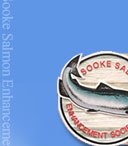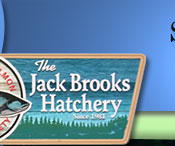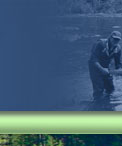Frequently Asked Questions
What are the major activities of the Sooke Salmon Enhancement Society?
The main activities of the SSES include:
- the operation of the Sooke River Jack Brooks Hatchery which releases 500,000 - 600,000 fry into the local water systems.
- the installation and operation of a small sea pen in Sooke Harbour from which we release an additional 75,000 smolts, and
- education activities in schools and the community with respect to salmon enhancement in the waters of the Sooke River and its tributaries.
In addition, throughout the summer months, we monitor and maintain summer flows of water throughout the entire 10 km length of Demamiel Creek to ensure the maximum survival rate for the resident coho and trout.
On the first weekend in August, we organize and operate our two-day Chinook Derby fundraiser.
Beginning September we install and operate our fence and trap in the Sooke River to capture our returning broodstock which leads us into our egg take for October and November.
In December, we supply eyed eggs for the “Fish in the Classroom” program for the local schools.
From January to June we do the rearing and daily feeding of the fry until they are released back into the Sooke River and Demamiel Creek.
Is membership open?
Membership is open men and women of all ages. There are currently about seventy individual members of the Society.
What do volunteers do?
Volunteer activities include taking brood stock in the fall, taking and rearing eggs and alevin, daily feeding of fry, hatchery maintenance and summer feeding of smolts in the sea pen. Volunteers are also involved in fund raising activities such as our Annual Chinook Derby.
Where is the hatchery situated?
The hatchery is located at 2895B Sooke River Road near the Juan de Fuca Salmon Restoration Society’s Charters River Interpretive Centre.
Can I visit the hatchery?
Yes you can. Either email us at sookeriverjbhatchery@shaw.ca to let us know when you would like to visit or call the Hatchery at (250) 642-0031 and leave a message, clearly stating your name and phone number. A volunteer will respond to your request as soon as possible.
Are there paid employees of the SSES?
No. The Society operates entirely with volunteer labour.
Where does the SSES receive its funds?
Primarily through fund raising such as our Annual Chinook Derby. Significant contributions come from corporate sponsors and the federal Department of Fisheries and Oceans (DFO), other local fishing derbies, private donations, and membership dues.
How can I make a donation ?
You can donate by sending a cheque made out to:
Sooke Salmon Enhancement Society
PO Box 947
Sooke BC V9Z 1H9
The Sooke Salmon Enhancement Society is a registered non-profit charity, and all donations over $10 will be issued a tax receipt.
Do hatcheries work?
Yes. The experience of Washington State and Oregon is that hatcheries have returned those waters to major economic engines of the Pacific Northwest. Our efforts in Sooke have revived a flagging fishery and aid in bringing millions of dollars to the area.
Are hatcheries “ fish farms” ?
Hatcheries are significantly different from fish farms. Hatcheries such as ours do not introduce alien species to our waters and concentrate on enhancing the numbers of indigenous wild stock. Currently the Sooke River is self-sustaining most years but in times when over-fishing, environmental destruction or natural disasters occur, the hatchery ensures the survival of the species. Our brood stock taking in the fall is regulated by the federal DFO as to the number and species of salmon we can take. Unlike fish farms we release fish at the fry or smolt stages and they return to the wild for their final growth before returning to spawn here. Fish farms operate for private profit, while we operate for the benefit of the public and the good of the environment.
How do you measure success?
The DFO carries out annual fish counts by swimming the waters of the Sooke River in the fall. From the DFO’s recovered data throughout the year, the majority of the adults that return to the Sooke River are from our hatchery.
Sadly, Coho returns on DeMamiel Creek have decreased in recent years due to the removal of the Bill James dam.
What salmonids are in the Sooke system?
The system supports Cutthroat, S teelhead, Coho, Chum and Chinook. The SSES enhancement efforts are limited to Chinook and Coho by DFO licensing.
How many fish a year does the Society release?
In 2019, the society released 500,000 Chinook fry from the hatchery plus a sea pen release of 75,000. For Coho a total of 136,000 fry were released.
Historically, including 2019 production, over 20,000,000 fry have been released into the river systems since the inception of the hatchery in 1981.
Home Page |



















